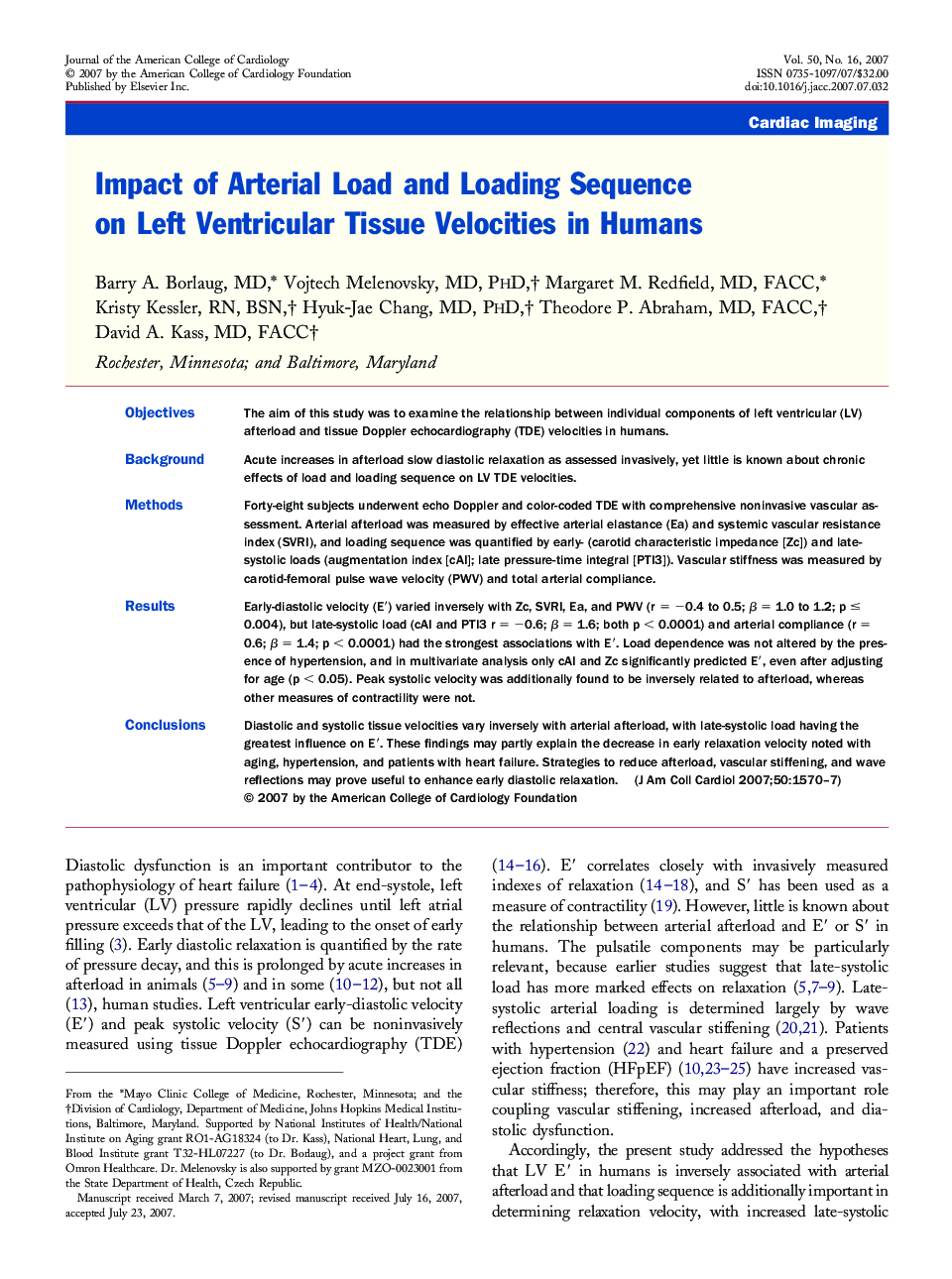| کد مقاله | کد نشریه | سال انتشار | مقاله انگلیسی | نسخه تمام متن |
|---|---|---|---|---|
| 2950792 | 1577452 | 2007 | 8 صفحه PDF | دانلود رایگان |

ObjectivesThe aim of this study was to examine the relationship between individual components of left ventricular (LV) afterload and tissue Doppler echocardiography (TDE) velocities in humans.BackgroundAcute increases in afterload slow diastolic relaxation as assessed invasively, yet little is known about chronic effects of load and loading sequence on LV TDE velocities.MethodsForty-eight subjects underwent echo Doppler and color-coded TDE with comprehensive noninvasive vascular assessment. Arterial afterload was measured by effective arterial elastance (Ea) and systemic vascular resistance index (SVRI), and loading sequence was quantified by early- (carotid characteristic impedance [Zc]) and late-systolic loads (augmentation index [cAI]; late pressure-time integral [PTI3]). Vascular stiffness was measured by carotid-femoral pulse wave velocity (PWV) and total arterial compliance.ResultsEarly-diastolic velocity (E′) varied inversely with Zc, SVRI, Ea, and PWV (r = −0.4 to 0.5; β = 1.0 to 1.2; p ≤ 0.004), but late-systolic load (cAI and PTI3 r = −0.6; β = 1.6; both p < 0.0001) and arterial compliance (r = 0.6; β = 1.4; p < 0.0001) had the strongest associations with E′. Load dependence was not altered by the presence of hypertension, and in multivariate analysis only cAI and Zc significantly predicted E′, even after adjusting for age (p < 0.05). Peak systolic velocity was additionally found to be inversely related to afterload, whereas other measures of contractility were not.ConclusionsDiastolic and systolic tissue velocities vary inversely with arterial afterload, with late-systolic load having the greatest influence on E′. These findings may partly explain the decrease in early relaxation velocity noted with aging, hypertension, and patients with heart failure. Strategies to reduce afterload, vascular stiffening, and wave reflections may prove useful to enhance early diastolic relaxation.
Journal: Journal of the American College of Cardiology - Volume 50, Issue 16, 16 October 2007, Pages 1570–1577